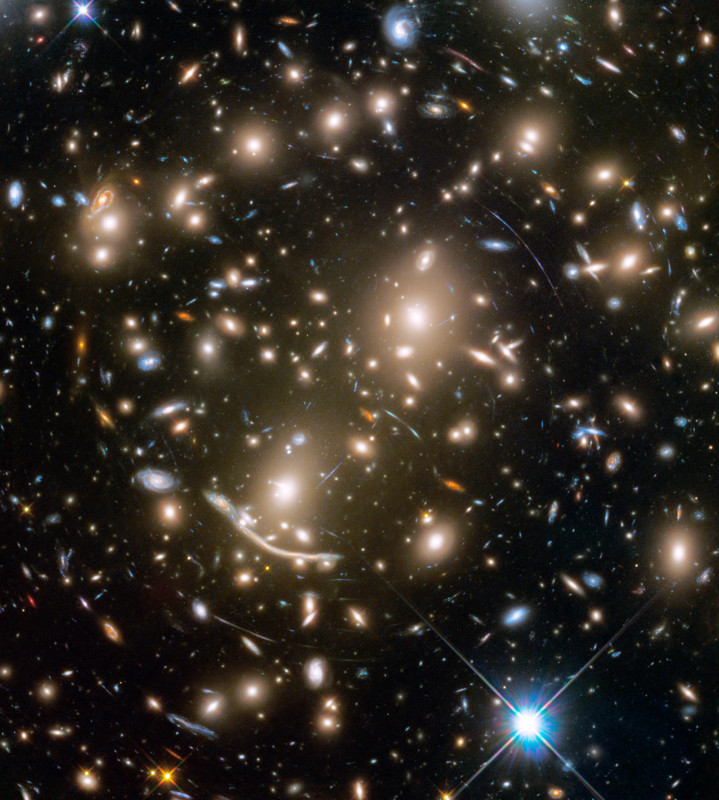The Hubble Space Telescope has an incredible camera system in its own right, but thanks to a phenomenon called gravitational lensing it can capture images far beyond what human technology and optical science currently allow.
As noted by Fstoppers, NASA explains that extreme gravity can create interesting visual effects that can be observed with the Hubble Space Telescope. Einstein predicted that mass can distort space, and his theory of relativity describes how mass concentrations distort the space around them. A gravitational lens can occur when a huge amount of matter, like a large cluster of galaxies, creates a gravitational field that distorts and magnifies light from distant galaxies that are behind it, but in the same line of sight.
Basically, gravity distorts space in such a way that it makes an “optic” that channels light towards Hubble and gives it the ability to see galaxies that are normally too far away to be studied with current technology and physical telescopes. NASA describes it as akin to looking through a giant magnifying glass.
“As Hubble looks out into these fields of galaxies, we sometimes see clusters of galaxies. These are galaxies that are held nearby each other by their mutual gravity,” Dr. Jennifer Wiseman, NASA’s Senior Project Scientist, says. “These clusters are massive conglomerations. There’s so much mass that they have an actual observable impact on space-time itself.”
Thanks to Hubble, scientists have been able to see distortions in space around clusters of galaxies.
![]()
“The way we see that is when light from a background galaxy travels through that cluster of galaxies or around it, due to this gravitational lensing effect,” Wiseman continues.
The photo below is a galaxy cluster called Abell 370 that contains what NASA describes as “an astounding assortment of several hundred galaxies tied together by the mutual pull of gravity.” This photo is only made possible thanks to gravitational lensing.

“More complex gravitational lensing arises in observations of massive clusters of galaxies. While the distribution of matter in a galaxy cluster generally does have a center, it is never circularly symmetric and can be significantly lumpy. Background galaxies are lensed by the cluster and their images often appear as short, thin “lensed arcs” around the outskirts of the cluster,” NASA elaborates.
“When we look at some of these distorted arcs, we can see more detail than we would have ever been able to see without gravitational lensing, nature’s boost,” Wiseman explains.
Wiseman says that gravitational lensing has allowed them to use Hubble in unexpected ways. Basically treating gravity as nature’s magnifying lens, what it can capture teaches them more about distant galaxies in detail they could never have seen without the phenomenon.
“It also to tells us how dark matter is distributed in those clusters because it turns out that most of the mass that’s distorting space and these clusters of galaxies is made of this unseen dark matter, not the visible stars in the galaxies, and we can’t see the dark matter,” Wiseman says. “But by seeing how this background light is distorted, we can kind of map out where that dark matter is.”
Author: Jaron Schneider
Source: Petapixel



